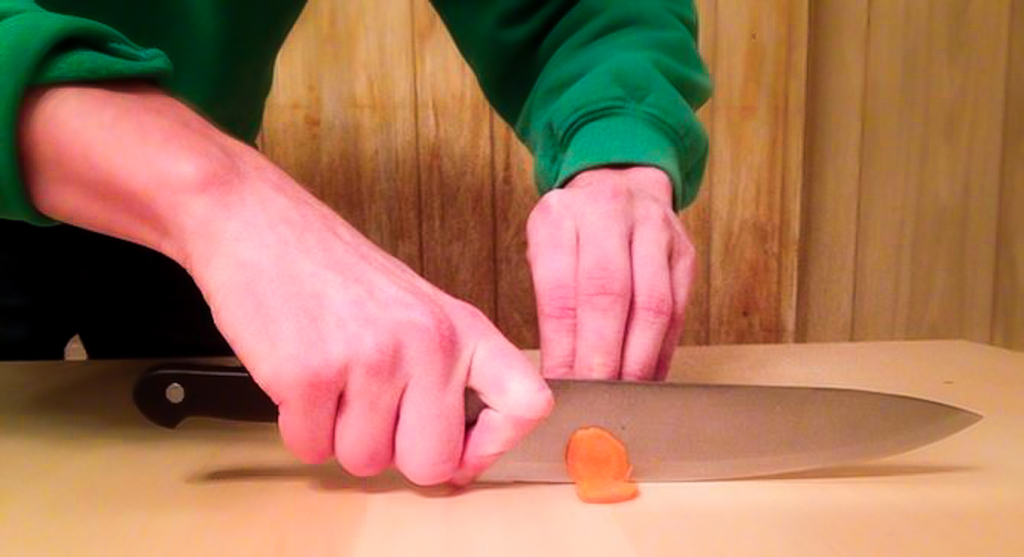One of the most important skills in a person’s cooking career—whether for family, friends, or in a restaurant— is the ability to cut food without removing the fingers from one’s hands. It is tempting to throw down a food item onto a cutting board and hack away; however, there are a few methods that can be used in order to ensure that the food is cut well and free of human blood and flesh. Growing up I observed a family friend, a professional chef, at work; in doing so, I learned some key knife skills.
To get to the level of these chefs, the skill you’re going to want to be using whenever wielding a blade is Dim Mak. Dim Mak, or “press artery,” is the way one must position one’s hands whenever using a knife in the kitchen. It is quite simple to put in to use; you put your index and ring fingers behind your middle finger in order to support it, and you use your thumb to keep the food item in place. Take a peek below, to see an example of Dim Mak, where the index and ring fingers are backing up the middle finger.

Photo by Bjorklund, Erlend
Note that the food is cut down to a manageable size, and the thumb is always placed to hold the food in place. Most importantly, the blade is always in contact with the middle finger while cutting. The blade should always be cutting downwards with gravity, allowing the chef to cut effortlessly through whatever is put in front of them. With proper form, this means that side of the knife will be balanced against the middle finger in order to reduce the chances of injury — although accidents can happen to the best of us.

Photo by Bjorklund, Erlend
Ok, with a firm grasp on Dim Mak, we can now move on to the act of cutting. The French method is a pretty traditional approach and entails keeping the knife tip in contact with the surface underneath. All you have to do, is apply firm pressure, and make small elliptical motions from the elbow. This approach is pretty intuitive, however, you must make sure you’re holding the knife properly. Instead of grabbing the handle, you should wrap you’re hand around the top of metal blade, thumb on the inner side.
*One of the most important aspects to remember is that the fingers should be curled slightly backward so that they are not exposed*

Photo by Erlend Bjorklund.
Again, note how the top of the blade is in contact with the cutting board as it comes down, and the arm is making a small elliptical motion, starting from the elbow. Using Dim Mak and the French method of cutting should result in nice clean cuts, as well as nice intact hands. Now you can go ahead and practice at home, and maybe if you try hard enough, get as good as this guy.
For further reference, check out the book “The Four Hour Chef” by Tim Ferriss for a more in-depth look at these techniques.

